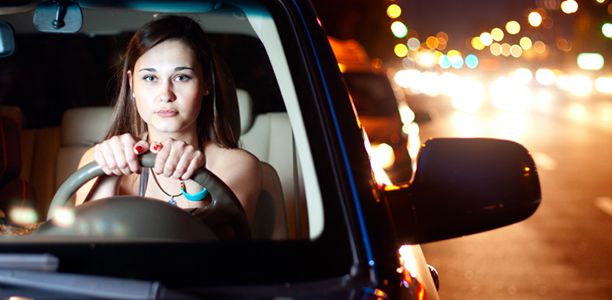Restricting teenagers from driving unsupervised at night, and introducing strict penalties and other licensing requirements, could reduce crashes significantly, according to research.
Published in Health Affairs, the study by researchers from Monash University and Harvard Medical School, shows that driving laws that eliminate or deter unsupervised night driving by people younger than 18 achieve substantial reductions in car crashes.
Car crashes are the leading cause of death among people aged 15-19 worldwide. In the US, where the study was based, teen drivers experience motor vehicle crashes at more than twice the rate of the total population of licensed drivers.
Researchers evaluated the impact of changes to the Massachusetts graduated driver licensing program. Designed to allow young drivers under 18 years to gain experience before receiving their full license, the program prohibits driving unsupervised at night. It also imposes penalties for those violating the restriction and includes compulsory drowsy driving education programs.
Police crash records of drivers aged 16-17 were analysed for one year before and five years after the law’s implementation in 2007. Two comparison groups were also evaluated.
The results showed that crash rates for drivers aged 16-17 fell 19%, night time crashes for this age group fell by 29%, and crashes causing fatal or incapacitating injury fell by 40%.
The lead author, Professor Shantha Rajaratnam from the School of Psychological Sciences at Monash University, and the Brigham and Women’s Hospital and Harvard Medical School in Boston, said the 18-19 age group should be the focus of targeted night driving interventions strategies in the future.
“Young people are strikingly overrepresented in sleep-related crashes. That’s because they are more vulnerable than older people to performance impairment as a result of sleep deprivation, particularly during the night time when the biological clock in the brain is signalling sleep,” he said.
“In the US, and similarly in Australia, drowsy driving is responsible for about 20% of fatal crashes. This study provides strong evidence for policy makers, not only in the US, but more broadly, that graduated driver licensing programs that include tough penalties for violating restrictions on night driving among teenagers, are highly effective in reduce motor vehicle crashes,.“
Night driving restrictions are already a feature of graduated driving licensing laws in nearly all states in the US. This study recommends that these restrictions have a much greater impact when they are accompanied by strict penalties, including enforcing drivers’ license suspensions as the penalty for intermediate stage drivers who violate night driving prohibitions, with incremental increases in the duration of the suspension for subsequent violations.
Education about the risks associated with night driving, including driver sleepiness; through mandatory driver training courses are among other measures suggested.
Senior author Dr Charles Czeisler from Harvard Medical School and Brigham and Women’s Hospital in Boston said: “Our data indicate that the 2007 revisions to the Massachusetts Junior Operator Law have prevented about 320 fatal and incapacitating injuries and 13,000 motor vehicle crashes among Massachusetts teen drivers over the past eight years.”
(Source: Monash University, Health Affairs)










